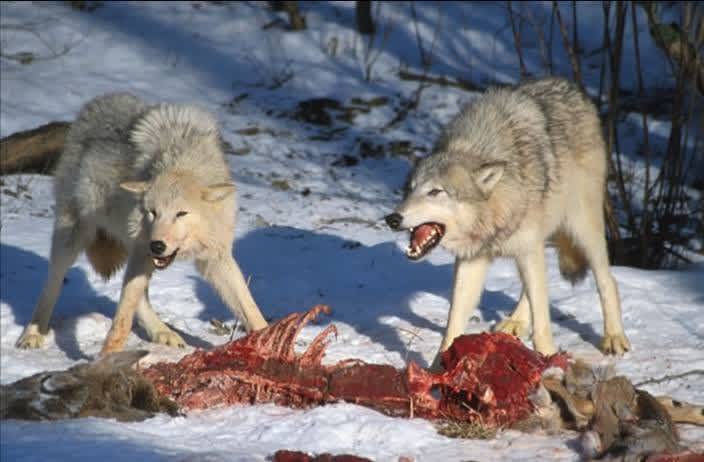Study: Impact of Wolves on Minnesota Moose Greater Than Expected
OutdoorHub Reporters 11.17.14

A new study recently published in the Journal of Wildlife Management found that wolves may be a bigger factor in Minnesota’s moose decline than experts previously believed. The study, authored by two adjunct professors at the University of Minnesota, David Mech and John Fieberg, concluded that there was a correlation between the number of wolves in moose territory and the population of the moose themselves. Following up on a previous study that also took into account climate changes, Mech and Fieberg said that their data “suggested a stronger role of wolves than heretofore believed.”
Outside of Alaska, Minnesota holds the highest wolf population in the United States by a wide margin. According to the Minnesota Department of Natural Resources (DNR), there are about 2,420 wolves living in the state distributed across 470 packs. Despite hosting a popular hunting season, Minnesota’s wolf population continues to grow and biologists counted at least 200 wolves more than last year. In contrast, the state’s moose numbers have taken a nose dive that has biologists increasingly worried. In the northeastern part of the state alone, a recent aerial survey estimated that the moose population dropped from about 8,000 in 2005 to 4,300 in 2014. When the DNR launched a program to study the causes of mortality on collared moose, the agency found that 17 of the 31 moose that died during the study were killed by wolves.
“Wolf predation is probably a little higher than we expected,” DNR researcher Glenn DelGiudice told the Minneapolis Star Tribune. “But we knew it would be a main source,”
Mech explained that wolves did not always have a large impact on moose numbers, but that changed in the past decade after a large boom in the population, which led to the predators moving in on moose territory.
“My data tends to indicate the problem was there were more wolves,” Mech said. “But that doesn’t necessarily mean that’s the only answer. Is there some change affecting moose that allows wolves to take more of them, or is it merely that there’s more wolves?”
The researcher contends that wolves are only one facet of the decline of moose in Minnesota, and there are other factors leading to the loss of the iconic animal. Last winter the state actually experienced an increase in the moose population in some areas, although biologists said that the change is not indicative of a comeback.

